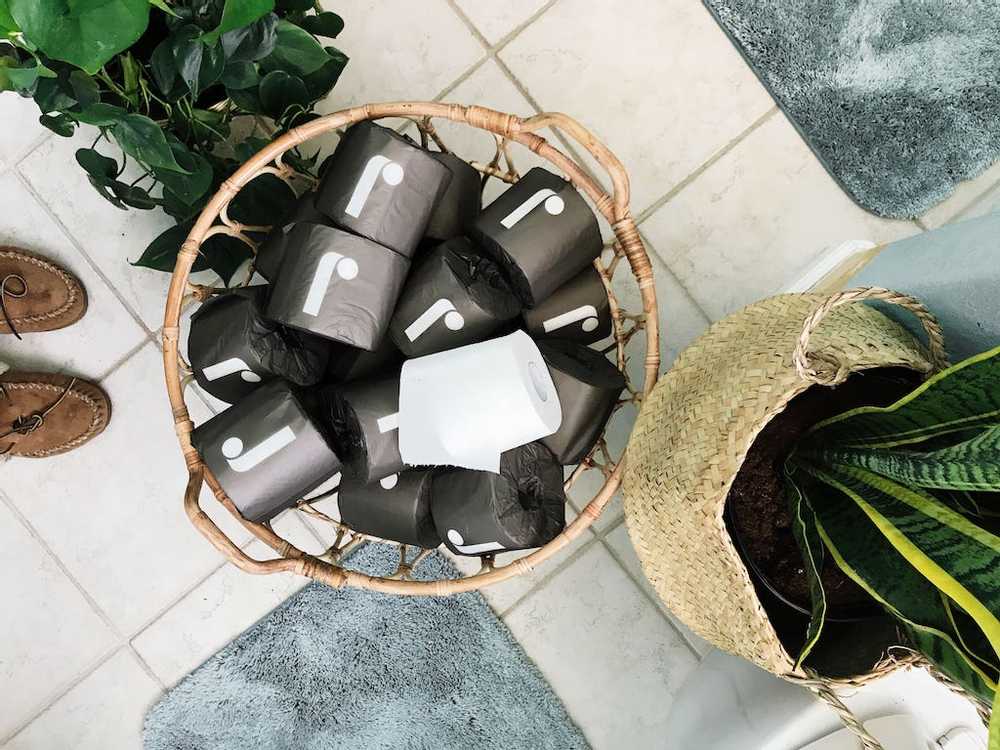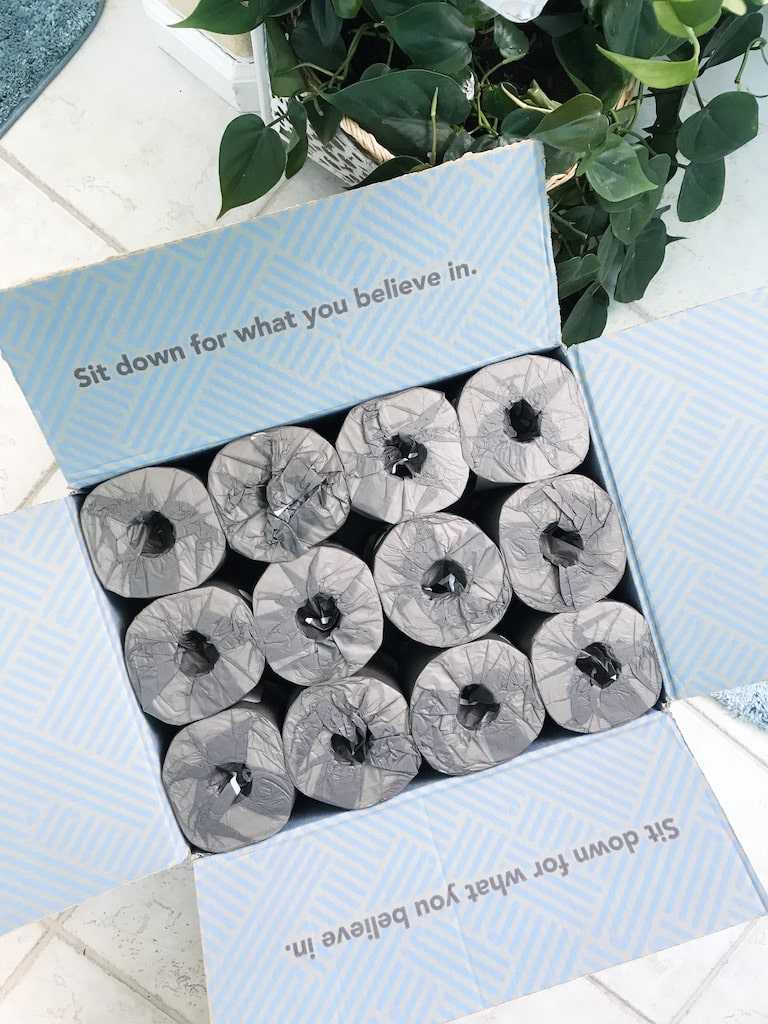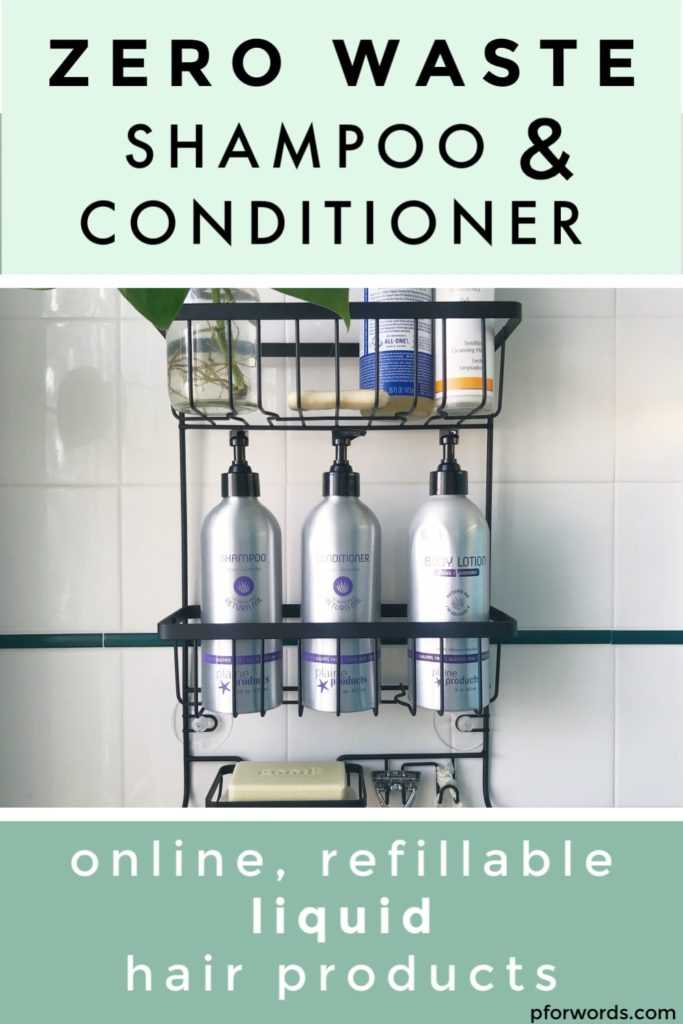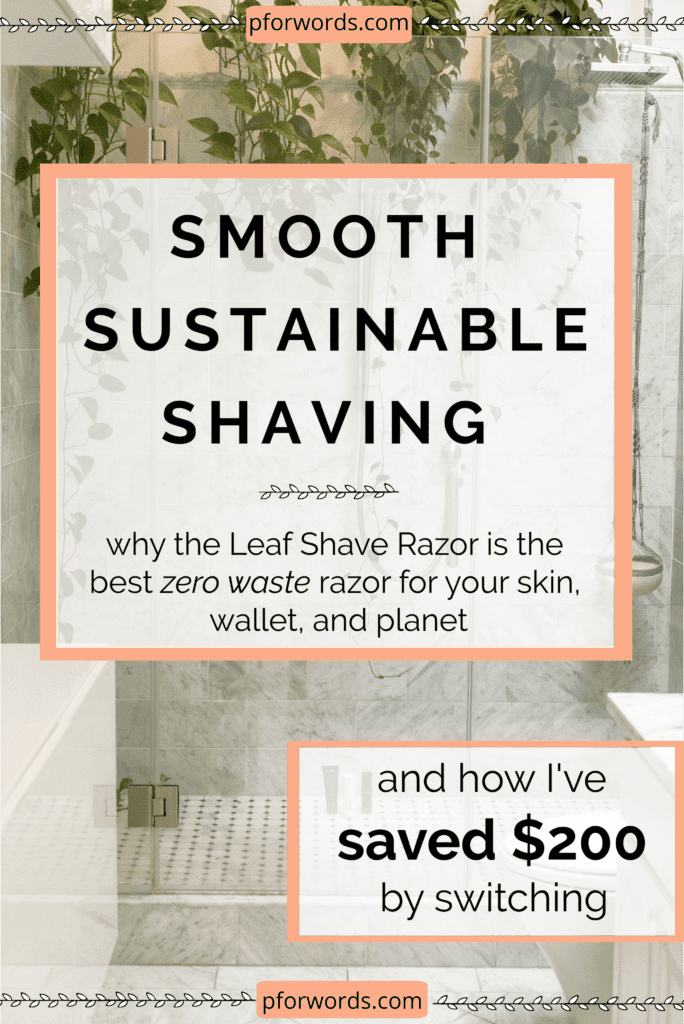5 Unexpected Zero Waste Swaps for a Sustainable Bathroom
I love that I'm seeing more and more people talking about swaps they're making in their lives to be more sustainable.
One of those hot topics is zero waste bathrooms swaps. Normally, these cover shampoo, conditioner, and beauty/skincare.
But what do you do after you've tackled those main buckets?
I wanted to make a post about 5 more advanced zero waste bathroom swaps you might not have thought about that can take your zero waste bathroom to the next level.

Switch to Sustainable Toilet Paper
We use a lot of toilet paper, and it's doing a lot of damage.
Worldwide, 27,000 trees are cut down every day to produce toilet paper.
A single American person uses on average 24 rolls a year. Americans use an average of 23.6 rolls each per year.
The majority of toilet paper (around 77% in 2017) on the market now is made with virgin pulp (versus recycled paper). Virgin pulp has longer strands, making it softer than recycled paper. But using that virgin paper comes at a steep cost: deforestation.
The popular virgin pulp toilet paper is made from trees that are usually cut using a clear cut method meaning that their roots die. That means it requires complete replanting for a new tree to grow.
Some tp companies claim that they replant each tree, but this still comes at a steep cost:
“The fact of the matter is that clearcutting does permanent damage to forests that replanting does not fix—scarring the landscape and changing the fragile balance of organisms and microorganisms in the soil, which reverberates all the way up the food chain. Often, wildlife like caribou do not return even to regrown clearcuts” - NRDC
As if that's not bad enough, we also have to consider the resources it takes to grow the tree, cut it down, process it, bleach it white, package it up, and ship it to our grocery store.
It’s a lot for something that we wipe our butts with once and then flush away.
There are two better options out there for your TP needs.
100% post-consumer recycled toilet paper
This is a great option in terms of doing good for the environment. However, speaking from experience, recycled TP isn't strong not is it soft in any way, shape or form.
Most of the time, I found that even overcompensate for tp sheet weakness but needing to use more. So that wasn't great for my wallet or the planet.
The second option is to use a more sustainable material, like bamboo!
Reel Bamboo Toliet Paper
I partnered with Reel Paper for this post because I absolutely love their bamboo toilet paper.
Why is bamboo better than tree tp?
1. Fast-growing
Bamboo is the world’s fastest growing plant (it can grow 3ft in 24 hours)! It can also be harvested once a year and doesn’t need to be replanted, so essentially it can be a continuously growing tp source.
2. More water-efficient
Bamboo uses 30% less water to grow than trees.
3. Bamboo absorbs more C02
Bamboo gives out 35% more oxygen than trees, meaning an acre of bamboo can fix approximately 25 metric tons of atmospheric CO2 per year.
Issues with Bamboo
I don’t want to gloss over some of the problems with bamboo.
It still requires chemicals to break the fibers down into a pulp to make paper, (but at least it’s not the same chemical mix used for bamboo textiles which really aren't great for the environment.)
Often times, it’s grown in China and then has to be shipped across the world, using a lot of fossil fuels.
But I think this is the best alternative out there for sustainability, softness, and strength for TP.
My experience with Reel’s toilet paper:
I'm not going to lie, I didn't have high expectations for the strength of this paper.
But I was SHOCKED by how strong it actually was.
In the past, I’ve used recycled tp and found it to be super flimsy (which then required I use a lot more of it). I expected something similar for this but was pleasantly surprised at its durability.
Let’s just say I had my period and all the 'funness' that goes with it recently, and Reel’s paper was not only super soft, but also 100% held up against a tough battle (sorry, tmi).

Who wants a discount code?
Reel was kind enough to let me pass along a discount code!
For 15% off a single purchase order, click here!
For \$10 off a your first subscription, click here!
Try a Bidet
Sustainable bamboo tp is fantastic. But one other way you can even further lessen your impact is to pair it with a bidet.
After spritz'n yourself off, use some of Reel's tp to dry yourself off.
Bidets are significantly more efficient than toilet paper and have a considerably smaller environmental impact. A standard bidet uses about eighth of a gallon per use.
In comparison, it takes about 37 gallons of water to manufacture a single roll of conventional toilet paper. If bamboo uses 30% less water, that means bamboo toilet paper uses about 26 gallons of water for 1 roll of tp.
Bidets aren't everyone's thing though, so no shame in your game with just sticking to tp.
Similar Bathroom - Themed Blog Posts:
The BEST Sustainable & Refillable Shampoo and Conditioner
My Extensive List of Zero Waste Hair Care Products/DIYS
Leaf Shave: The Zero Waste Razor Alternative that Trumps Plastic Ones
Install a Water Efficient Shower Head
Home Water Works says that in most homes, showers are the third-largest user of water after toilets and clothes washers. And there are so many factors at play here from the pressure of the water/ flow of the shower head, and length of the shower.
Well, I guess that’s just two factors. But they really do add up.
For a standard showerhead, 2.5 gallons of water are used each minute. Take a 10-minute shower and that’s 25 gallons of water used.
You can buy a \$8 low flow (1.25 gpm) shower head from Amazon. I’ve used similar kinds before and they worked great. Fantastic water pressure, easy use, the whole shebang.
If you’re feeling a little bouji, Nebia makes a really interesting water-efficient rain-like shower.
This is one of my favorite swaps for my bathroom.
Curious about the other changes I’ve made to my bathroom / beauty routine to be more sustainable? Check out these posts:
Install Low Flow toilets
In older homes, you're more likely to run into single-flush, water-inefficient toilets. These only have 1 flush for both liquid and solid waste. At around 5 gallons per flush, trips to the bathroom can really add up your water usage and bill.
You don't need to splurge on a new low flow toilet, dual-flush toilet to make it more water-efficient. (But you certainly can if you have the dough!)
Instead, you can put an inch or two of sand or pebbles inside each of two plastic bottles. Fill the bottles with water, screw the lids on, and put them in your toilet tank, safely away from the operating mechanisms. But be sure at least three gallons of water remain in the tank so it will flush properly.
Screw the old bulbs
Bad pun, I admit it.
But often an overlooked item in the bathroom are the types of bulbs you’ve installed for lighting.
Most bathrooms have 4-5 light bulbs.
If you switch over to energy-efficient bulbs, you’ll use between 25-80% less energy, while still maintaining the desired level of light.
Wrapping it up!
I hope this gave you some ideas of how you can advance your zero waste bathroom swaps! I think the biggest thing here is to be mindful and respectful of how much water you're using. Between the faucet, toilet, sink, and shower - there's a large potential for wasting away this precious resource.

You may also like:
Hi, I'm Taylor
Amateur adult. Zero waste zealot. Personal finance fiend. Spicy food supporter. I’m an mid 20’s gal living in Denver, Colorado. My love of the outdoors has cultivated my zero waste lifestyle, which inadvertently fueled my passion for personal finance. Cheers to everyone interested in lessening their footprint while growing their wallet!





